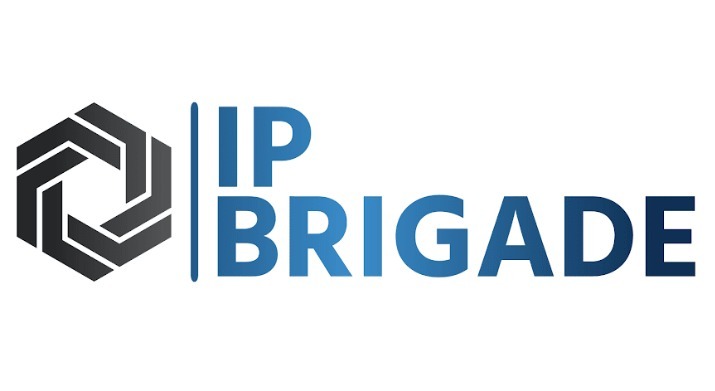The Ultimate Guide to Conducting a Patent Validity Search: How to Protecting Your Inventions
Are you an inventor looking to protect your groundbreaking ideas and inventions? Conducting a patent validity search is an essential step in safeguarding your intellectual property. In this ultimate guide, we will walk you through the process of conducting a patent validity search, ensuring that your inventions are protected.
Whether you are an individual inventor or represent a company, understanding the validity of a patent is crucial when it comes to securing your intellectual property rights. By conducting a comprehensive patent validity search, you can determine if your invention is truly unique and non-obvious, and identify any existing patents that may impact its validity.
In this guide, we will cover all aspects of conducting a patent validity search, from defining the scope of your search to using different patent databases and search strategies. We will also provide tips for analyzing the results of your search and determining the validity of the patent in question.
Protecting your inventions is of utmost importance, and conducting a patent validity search is a vital part of the process. Join us as we delve into the world of patent validity searches and equip you with the knowledge to protect your valuable inventions.
Why are patent validity searches important
In the world of innovation and intellectual property, patents play a crucial role in protecting inventions and providing exclusive rights to their creators. However, not all patents are valid, and conducting a patent validity search is essential to ensure the strength and enforceability of your patent.
A patent validity search, also known as a patentability search, is a thorough investigation into existing patents and prior art to determine if your invention meets the criteria for patentability. This process helps you identify any prior patents or publications that may impact the validity of your invention.
By conducting a patent validity search, you can assess the novelty and non-obviousness of your invention. This search allows you to evaluate the likelihood of obtaining a patent, avoid potential infringement lawsuits, and make informed decisions regarding the protection and commercialization of your inventions.
Understanding the patent validity search process
Before diving into the intricacies of conducting a patent validity search, it is crucial to understand the key steps involved in the process. While the specifics may vary depending on the jurisdiction and the nature of your invention, the following are the general steps to conduct a patent validity search.
- Define the scope of your search: The first step in conducting a patent validity search is to clearly define the scope of your search. Determine the specific aspects of your invention that you want to protect and focus your search accordingly. Consider the relevant technology field, keywords, and concepts associated with your invention.
- Use different patent databases and search strategies: Once you have defined the scope of your search, it is time to explore various patent databases and search strategies. There are numerous online databases available, such as the United States Patent and Trademark Office (USPTO) database, the European Patent Office (EPO) database, and the World Intellectual Property Organization (WIPO) database. Utilize advanced search features, including keyword searches, classification searches, and citation searches, to enhance the effectiveness of your search.
- Analyze the search results: After conducting your search, you will be presented with a vast amount of information in the form of patents and prior art. Analyzing the search results is a critical step in determining the validity of your patent. Carefully review the relevant patents and publications, paying attention to the claims, descriptions, and drawings. Compare the features and functionalities of the identified prior art with your invention to assess the potential impact on your patent’s validity.
Key elements to consider in a patent validity search
When conducting a patent validity search, it is essential to consider several key elements to ensure comprehensive coverage and accuracy. These elements will help you navigate through the vast amount of patent data and identify potential threats to your invention’s validity.
- Patent claims: Patent claims define the boundaries of an invention and describe the specific features that make it unique. When conducting a patent validity search, pay close attention to the claims of relevant patents. Compare these claims with the features of your invention to assess potential overlaps or similarities.
- Prior art: Prior art refers to any existing knowledge or information that is publicly available before the filing date of a patent application. It includes patents, scientific articles, technical reports, and any other form of publicly disclosed information. Identifying prior art is crucial in a patent validity search as it helps assess the novelty and non-obviousness of your invention.
- Patent citations: Patent citations are references to prior patents or publications made within a patent document. They indicate the relevance and potential impact of prior art on the patent in question. When analyzing search results, pay attention to the citations within relevant patents. Follow these citations to explore additional prior art that may affect the validity of your patent.
Tools and resources for conducting a patent validity search
Conducting a patent validity search can be a complex and time-consuming process. Fortunately, there are several tools and resources available to streamline and enhance your search efforts. These resources provide access to vast patent databases and offer powerful search functionalities to facilitate your search for relevant prior art.
- Online patent databases: Online patent databases, such as the USPTO database, EPO database, and WIPO database, are invaluable resources for conducting a patent validity search. These databases provide access to millions of patents and prior art documents from around the world. Utilize the advanced search features offered by these databases to narrow down your search and uncover relevant prior art.
- Patent search tools: In addition to patent databases, there are various patent search tools available that can simplify the process of conducting a patent validity search. These tools utilize advanced algorithms and natural language processing techniques to analyze patent documents and identify relevant prior art. Examples of popular patent search tools include PatBase, PatSnap, and Espacenet.
- Professional patent search services: If conducting a patent validity search on your own seems overwhelming, you can also consider hiring professional patent search services. These services employ experienced patent searchers who have expertise in navigating patent databases and identifying relevant prior art. They can save you time and ensure a more comprehensive search.
Common challenges and pitfalls in conducting a patent validity search
While conducting a patent validity search is crucial for protecting your inventions, it is not without its challenges. Several common pitfalls can hinder the effectiveness of your search and potentially impact the validity of your patent. Being aware of these challenges can help you navigate through them and conduct a more thorough search.
- Language barriers: Patents are filed in various languages, and language barriers can make it challenging to conduct a comprehensive patent validity search. It is important to consider translations and utilize language-specific search terms to ensure you capture relevant prior art.
- Incomplete or outdated databases: Patent databases may not always be complete or up-to-date. Some patents may not be included in the database due to administrative delays or errors. When conducting a patent validity search, it is essential to cross-reference multiple databases and consider alternative sources of prior art to mitigate the risk of missing relevant information.
- Ambiguity and interpretation: Patent documents can sometimes be complex and ambiguous, making it challenging to interpret the claims and compare them to your invention. Seek assistance from patent professionals or consult patent search experts to ensure accurate and thorough analysis of the search results.
Tips for maximizing the effectiveness of your patent validity search
Conducting a patent validity search can be a complex and time-consuming process. To maximize its effectiveness and obtain accurate and reliable results, consider the following tips:
- Be specific in your search: Clearly define the scope of your search and use specific keywords and concepts that accurately represent your invention. This will help narrow down the search results and increase the relevance of the prior art identified.
- Utilize advanced search techniques: Take advantage of the advanced search features offered by patent databases and search tools. These features include Boolean operators, wildcard symbols, and proximity operators. By using these techniques, you can refine your search and uncover more targeted results.
- Review patents in related technology fields: While it is important to focus on patents directly related to your invention, it can also be beneficial to review patents in related technology fields. These patents may provide additional insights and potential prior art that could impact the validity of your invention.
- Stay up-to-date with patent law: Patent laws and regulations are subject to change. Stay informed about the latest developments in patent law, especially in the jurisdictions where you intend to seek patent protection. This knowledge will help you make informed decisions regarding the validity and enforceability of your patent.
Hiring a professional for a patent validity search
Conducting a patent validity search requires a deep understanding of patent law, databases, and search techniques. If you find the process overwhelming or lack the necessary expertise, it may be beneficial to hire a professional for a patent validity search.
Professional patent search services have access to specialized databases, advanced search tools, and experienced searchers who can perform a comprehensive and thorough search on your behalf. They can save you time and provide valuable insights into the validity of your patent.
When considering hiring a professional, ensure they have a track record of conducting patent validity searches and possess the necessary domain knowledge relevant to your invention. Communicate your requirements clearly and provide any relevant information that can assist them in conducting an effective search.
Importance of documenting your patent validity search results
Documenting your patent validity search results is a crucial step in the patent protection process. It serves as evidence of your due diligence and can be invaluable in defending the validity of your patent in case of any disputes or infringement claims.
When documenting your search results, include detailed information about the search strategy, databases used, search terms, and the identified prior art. Take screenshots or printouts of relevant search results and attach them to your documentation. This comprehensive record will help establish the thoroughness and accuracy of your search.
Additionally, maintaining a well-documented record of your patent validity search results can assist you in future patent applications or licensing negotiations. It provides a reference point for assessing the novelty and non-obviousness of your inventions and enables you to make informed decisions regarding their protection and commercialization.
Conclusion and next steps for protecting your inventions
Conducting a patent validity search is an essential part of protecting your inventions and ensuring their enforceability. By understanding the patent validity search process, utilizing the right tools and resources, and documenting your search results, you can enhance your chances of obtaining and maintaining strong patent rights.
Remember to stay informed about the latest developments in patent law and seek professional assistance when necessary. Protecting your inventions requires a proactive approach, and conducting a patent validity search is a critical step in safeguarding your intellectual property.
Armed with the knowledge and insights gained from this ultimate guide, you are now better equipped to navigate the complex world of patent validity searches. Take the necessary steps to protect your valuable inventions and secure your position in the competitive landscape of innovation.









